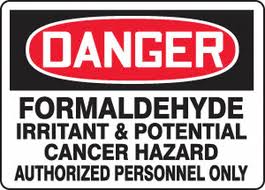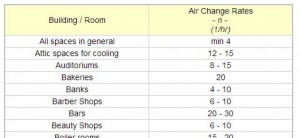Posted by admin under ACGIH, Air Monitoring, Carcinogen, Chemical Exposure, Exposure, Federal OSHA, Formaldehyde, insulation, odor thresholds, Olfactory, PEL (Perm Exp Limit), Proposition 65
Comments Off on Formaldehyde in construction
From what I have seen, there are not a large amount of formaldehyde exposures in construction. However, there is A LOT of formaldehyde used in construction materials. Formaldehyde can be dangerous at levels undetectable by your nose. And, the symptoms of exposure are nondescript (irritant & tingling of eyes, nose, respiratory tract).
Here are some products that may contain trace (or more) amounts of formaldehyde:
- resins in plywood, MDF, CDX, particle board/fiber board
- garage doors
- drywall
- roofing
- glues / mastics
- paint/coatings
- carpets
- insulation (spray in and batting)
I believe the reason we do not see high exposures is due to the limited duration of exposure, and the open-aired nature during the construction. Some exceptions are warehouses with large storage areas of particle board/MDF. (I have found exposures in these areas)
The OSHA exposure limit for formaldehyde is 0.75 ppm (action limit of 0.5 ppm, and short term limit of 2 ppm). However, this may not be low enough, based upon other standards (ACGIH says 0.3 ppm, NIOSH 0.1 ppm)
Another major issue with this hazard in construction is once the space is occupied.
- Once construction is done, the space may be sealed up, heated, and additional curing can occur.
- This may release more formaldehyde, and also NOT allow as much to escape (by dilution ventilation).
- Compounding this issue are the type of occupants in the building. Are there children, non-working adults, immunocompromised individuals, sick, or elderly occupying this space? The OSHA standards are NOT protective for these types of people.
I do not forsee this type of sign being posted immediately after new construction.
 On the plus side, someone has discovered that plants may help reduce formaldehyde & VOC levels in homes. Horticulture Science Kwang Jim Kim, et.al
On the plus side, someone has discovered that plants may help reduce formaldehyde & VOC levels in homes. Horticulture Science Kwang Jim Kim, et.al
Posted by admin under Dust, Engineering Controls, industrial hygienist, Management, ventilation
Comments Off on Calculate Air Changes per Hour
The first question is, “why is this useful?“. Well, generally speaking, it is helpful to know if you are getting bare-minimum airflow, or if you are creating a wind tunnel on your project. Since many construction projects are not able to mobilize until the last minute, it is useful to make some rough guesstimates and calculate the airflow in the room. One squirrel-cage fan isn’t going to ventilate a warehouse, and 5 of them in a manhole will make welding impossible.  so…moving on.
Air changes per hour (ACH) is a function of the room size and the airflow into/out of the room. It is simply the number of times the volume of air is changed out over a one hour time period. One reason this calculation is so attractive to use is because there are recommended exchange rates for different environments. Some of them can be seen in the picture, the rest can be found here.
To calculate you must know:
- A = Volume of room in cubic feet (ft3)
- Q = Air flow of your fan (s) in cubic feet per minute (CFM)
Rather than reinvent the wheel Wiki has a good summary.
Caveat/Disclaimers. There are quite a few…so be careful.
- Mixing. The air never really mixes when you are exchanging air in this manner. It is dilution ventilation. So,
- Never use this method for any hazardous source, and
- Never use this for any carcinogens (asbestos, benzene, etc).
- Airflow into & out of the space is required, and is never ideal. Make sure there is space for the air to actually exchange.
- Make sure your fans work properly and do provide the manufacturers output.
 On the plus side, someone has discovered that plants may help reduce formaldehyde & VOC levels in homes. Horticulture Science Kwang Jim Kim, et.al
On the plus side, someone has discovered that plants may help reduce formaldehyde & VOC levels in homes. Horticulture Science Kwang Jim Kim, et.al